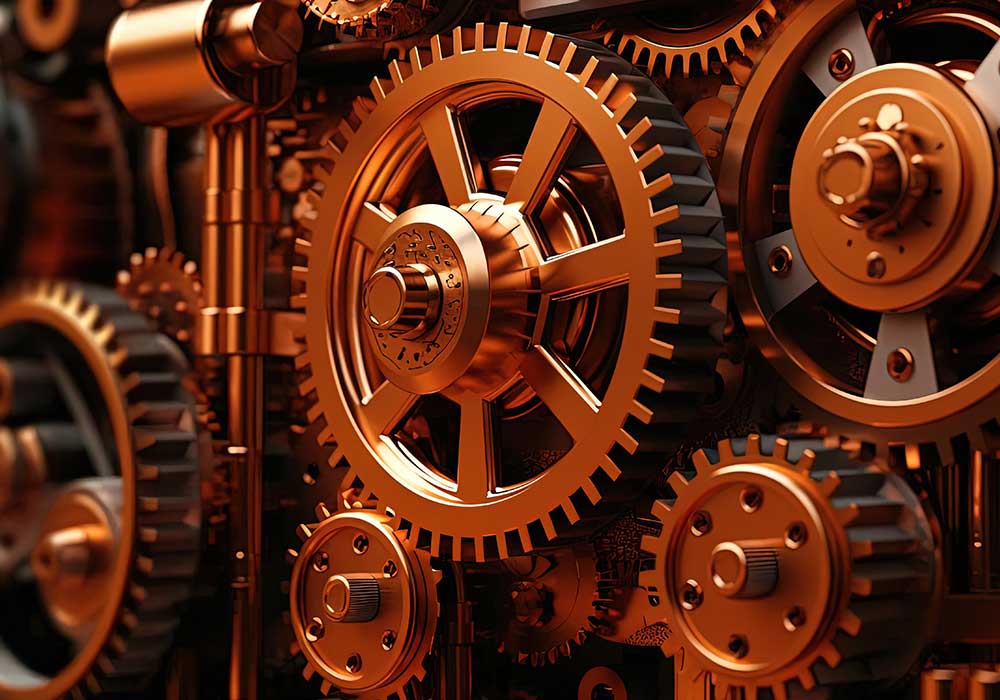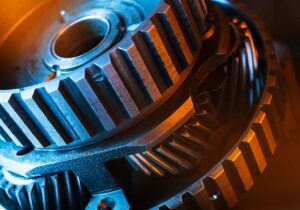
The article highlights heat treatment’s role in boosting gears’ durability and resilience for mechanical systems. Gears are vital in industries, demanding peak performance. Through heat treatment, raw materials like steel transform to endure tough conditions. Gear failures stem from wear, fatigue, and more, but heat treatment’s stages – heating, quenching, tempering – yield tough yet flexible materials. Techniques like carburizing and nitriding optimize gear performance, merging science and craftsmanship. This ensures longevity, elevating gears’ efficiency in mechanical systems.
Gears are the unsung heroes behind the seamless functioning of numerous mechanical systems, driving everything from automobiles to industrial machinery. Despite their humble appearance, these small yet powerful components are subjected to tremendous stresses and loads, making their durability and resilience critical to the overall efficiency of the machines they serve. What sets these gears apart and gives them their robustness? The answer lies in the transformative power of heat treatment.
The Birth of a Gear: Starting with Raw Materials
At the very heart of every gear is a raw material, typically steel or alloy, chosen for its mechanical properties and suitability for the intended application. However, raw materials alone do not possess the desirable characteristics needed to endure the harsh conditions under which gears operate. This is where heat treatment comes into play, elevating the gear’s performance from ordinary to extraordinary. But, before we move on to understanding the various methods of heat treatment, let us first try to know the major causes of gear failure.
Fundamental Reasons Behind Gear Failure
Gear failure is a critical issue that can lead to machinery breakdowns and costly repairs. Here are the key points to understand about gear failure:

Now that we know the major reason behind gear failure, let us puzzle out the important stages involved in heat treatment.
Unleashing the Power of Heat Treatment
Heat treatment is a controlled process of heating and cooling metal to alter its internal structure, thereby enhancing its mechanical properties. When it comes to gears, heat treatment is an indispensable step in the manufacturing process, designed to achieve specific improvements in hardness, wear resistance, strength, and toughness. Striking the right balance between these properties is crucial to ensure the gear can withstand the rigors of its designated task.
Unraveling the Three Stages of Heat Treatment
The heat treatment process is akin to the metamorphosis of a caterpillar into a butterfly – a profound transformation that takes place fundamentally in three distinctive stages:
Heating: The raw gear material is carefully heated to a precise temperature, known as the austenitizing temperature. This causes the metal’s microstructure to undergo a transition from its original state to austenite, a more malleable phase.
Quenching: Once the metal reaches the critical temperature, it’s rapidly cooled or quenched in a specific medium, such as oil, water, or air. This rapid cooling process “freezes” the desired microstructure in place, resulting in a harder and more resilient material.
Tempering: While quenching increases the gear’s hardness, it also renders it quite brittle. To strike the right balance between hardness and toughness, the quenched gear is reheated to a lower temperature during tempering. This allows the microstructure to become more ductile while preserving its increased hardness.

Diverse Heat Treatment Techniques for Gears
The art of heat treatment isn’t a one-size-fits-all approach. Different techniques are employed to optimize gear performance for various applications. Some common heat treatment methods for gears include:
Carburizing: This technique involves introducing carbon into the surface of the gear, creating a hardened outer layer with a more ductile core. Carburizing is highly effective in enhancing wear resistance.
Nitriding: Nitriding diffuses nitrogen into the gear’s surface, forming a wear-resistant layer that boosts the gear’s durability, making it ideal for heavy-duty applications.
Induction Hardening: In induction hardening, only specific areas of the gear, such as the tooth flanks, are heated and quenched. This localized treatment imparts hardness precisely where it’s needed most.
The Confluence of Science and Craftsmanship
Heat treatment for gears is a fine balance between science and craftsmanship. Skilled heat treatment specialists possess a deep understanding of the metallurgical properties of different metals and heat treatment techniques. Their expertise in precisely controlling factors such as temperature, quenching speed, and tempering duration ensures that gears achieve optimal performance and longevity.
Elevating Gears to Excellence
As we marvel at the seamless operation of machinery powered by gears, we must remember the hidden journey each gear undertakes – from raw to resilient through the art of heat treatment. The careful orchestration of heating, quenching, and tempering transforms ordinary raw materials into exceptional gears, ready to tackle the challenges of modern-day industries. Without the magic of heat treatment, the world of mechanics would lack the efficiency and precision that it so depends on today. So, let us appreciate the artistry of heat treatment, the unsung hero that elevates gears from raw materials to resilient performers in the grand symphony of engineering.